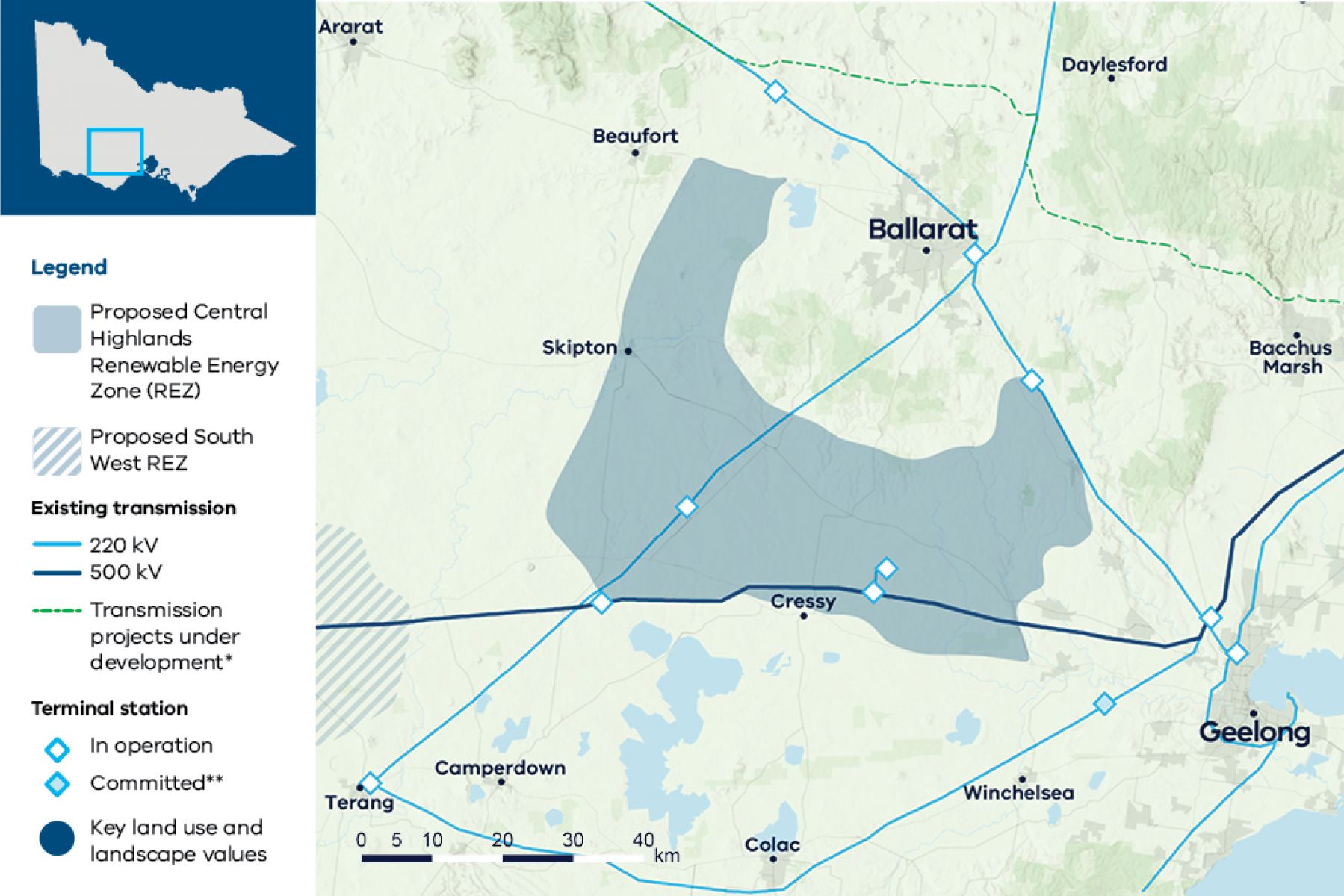On this page:
A renewable energy zone is proposed west and south of Ballarat as part of the 2025 Victorian Transmission Plan.
Before being officially declared by the Minister for Energy and Resources, there will be a further chance to provide your feedback. For more information, visit Engage Victoria.
Where is the zone?
The proposed Central Highlands Renewable Energy Zone covers parts of the Golden Plains, Corangamite and Pyrenees local government areas. Small sections of the zone also sit within Moorabool and Colac Otway local government areas.
It is within the Registered Aboriginal Party boundaries of the Wadawurrung Traditional Owners Aboriginal Corporation and Eastern Maar Aboriginal Corporation.
When identifying this zone, we have carefully considered community concerns about the impacts of cumulative development. This is balanced with the pressing need to position renewable energy zones with access to high-quality wind and solar energy and near existing transmission lines.
In response to feedback on the draft Victorian Transmission Plan, the northern area of the proposed Central Highlands Renewable Energy Zone has been reduced. This reflects multiple considerations, including likely preference of generators to connect to the 500 kilovolt (kV) network to the south, land-use sensitivities, community feedback and limited land availability.
In the south, a small area has been added to allow additional space close to the 500 kV transmission line, while still avoiding wetlands and lakes in the area.

How feedback shaped the zone
Community and industry views have been crucial to the design of the 2025 Victorian Transmission Plan.
VicGrid's role is to balance the need for new renewable projects that will deliver reliable and affordable power with a range of other factors, including how we minimise impacts on landholders, communities, agriculture, the environment and power bills.
Not all community or industry requests have been adopted.
The Victorian Transmission Plan reflects difficult choices, made by weighing up many factors to deliver a plan that best serves all Victorians.
What we heard through feedback
- Minimise impacts on productive farmland and agriculture, particularly horticulture production.
- Protect biodiversity and the natural environment, including wedge-tailed eagle and brolga habitats and the Wombat State Forest.
- Minimise cumulative impacts caused by increased renewable energy development and the Western Renewables Link (WRL) project.
- Avoid areas of natural hazard vulnerability, particularly areas with high bushfire risk.
- Avoid areas around Mount Bolton and Mount Beckworth, which are of local significance.
- Developers called for some areas to be included in the zone to account for projects in development.
What we did
- We sought to avoid agricultural land, including horticulture production around Ballarat and Ballan.
- We sought to protect areas of significant environmental value, especially areas with a high concentration of wetlands.
- We located the proposed renewable energy zone close to the existing transmission infrastructure to coordinate connection and reduce the overdevelopment of transmission lines.
- We revised the original shape of the draft proposed zone to remove the area around Mount Bolton and Mount Beckworth, and added a small section to the south of the proposed zone instead.
To find out more, read the Proposed Central Highlands Renewable Energy Zone factsheet.
Next steps
Communities within proposed renewable energy zones can continue to provide feedback and seek more information about renewable energy zones, including through face-to-face meetings with VicGrid.
We will invite formal feedback about the proposed Central Highlands Renewable Energy Zone as part of the official declaration process.
There will be 6 weeks of consultation which will give landholders, communities and Traditional Owners another opportunity to provide feedback and shape decision-making. The timing for this will be announced in the coming weeks.
To stay up to date, subscribe to our newsletter.
Call us on 1800 418 341 or email vicgrid@deeca.vic.gov.au
Page last updated: 21/08/25
